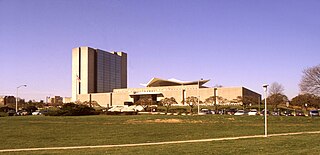
Zinc finger transcription factor Trps1 is a protein that in humans is encoded by the TRPS1 gene.

Cytoplasmic dynein 1 heavy chain 1 is a protein that in humans is encoded by the DYNC1H1 gene.

Dynein light chain Tctex-type 1 is a protein that in humans is encoded by the DYNLT1 gene.

Dynein light chain roadblock-type 1 is a protein that in humans is encoded by the DYNLRB1 gene.

Cytoplasmic dynein 1 intermediate chain 1 is a protein that in humans is encoded by the DYNC1I1 gene.

Cytoplasmic dynein 2 heavy chain 1 is a protein that in humans is encoded by the DYNC2H1 gene.

Dynein heavy chain 5, axonemal is a protein that in humans is encoded by the DNAH5 gene.

Dynein heavy chain 9, axonemal is a protein that in humans is encoded by the DNAH9 gene.

Dynein intermediate chain 1, axonemal is a protein that in humans is encoded by the DNAI1 gene.

Cytoplasmic dynein 1 light intermediate chain 1 is a protein that in humans is encoded by the DYNC1LI1 gene.

Cytoplasmic dynein 1 light intermediate chain 2 is a protein that in humans is encoded by the DYNC1LI2 gene.

Dynein light chain 4, axonemal is a protein that in humans is encoded by the DNAL4 gene.

Dynein heavy chain 11, axonemal is a protein that in humans is encoded by the DNAH11 gene.

COL22A1 is a human gene encoding for collagen. The associated protein is thought to contribute to the stabilization of myotendinous junctions and strengthen skeletal muscle attachments during muscle contraction.

Dynein intermediate chain 2, axonemal, also known as axonemal dynein intermediate chain 2, is a protein that in humans is encoded by the DNAI2 gene.

Dynein light chain 1, axonemal is a protein that in humans is encoded by the DNAL1 gene.

Kintoun, is a protein that is encoded by the DNAAF2 gene.

Dynein, axonemal, heavy chain 7 is a protein in humans that is encoded by the DNAH7 gene.

Clathrin, light chain B is a protein in humans that is encoded by the CLTB gene.

Dynein axonemal heavy chain 1 is a protein that in humans is encoded by the DNAH1 gene.

The United States National Library of Medicine (NLM), operated by the United States federal government, is the world's largest medical library.
The public domain consists of all the creative works to which no exclusive intellectual property rights apply. Those rights may have expired, been forfeited, expressly waived, or may be inapplicable.


















